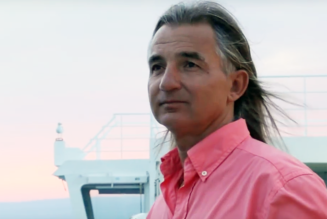By Dr. Jeff Mirus ( bio – articles – email ) | Apr 09, 2024
I was pleasantly surprised by the latest declaration from the Dicastery for the Doctrine of the Faith, “Dignitas Infinita” on Human Dignity. I say this because of the tendency of the current pontificate to place greater emphasis on the aspects of human dignity the modern Western world tends to agree about (such as peace among peoples and environmental issues, even if these are often honored in the breach) than on the aspects which divide the secular West from the message of Christ (such as the epidemic abuse of human sexuality, abortion and the destruction of the family). However, this new Declaration is a deliberate consolidation of the teachings on human dignity of the last few popes, which makes it a significantly richer document.
A firm foundation
Following introductory material, the core text begins with the subhead “A Fundamental Clarification” which argues that confusion about human dignity must be dispelled by a rigorous understanding of its simultaneous ontological, moral, social, and existential reality. Human dignity’s fundamentally ontological dimension consists in the reality that an indelible dignity belongs to each human person “simply because he or she exists and is willed, created, and loved by God” (7). The moral dimension is rooted in how each person exercises his or her freedom. Thus we can seriously impair our moral dignity through our own bad choices while still retaining our ontological dignity as beloved sons and daughters of God through Jesus Christ.
Our social dignity refers more to our situation in human society and embraces the question of how we are forced to live by circumstances; in other words, the external or social conditions of our lives may not be worthy of our ontological dignity. Even here, however, our existential dignity may (and should) remain intact, as we meet hardship and injustice without ceasing to “struggle to live with peace, joy, and hope”. It is also very much worth mentioning another point of emphasis in the text: Since each person possesses “ontological” dignity (dignity in his or her very being as a beloved son or daughter of God), it is always wrong for any person to be treated as disposable: “This applies, for instance, to an unborn child, an unconscious person, or an older person in distress” (9).
The overall text is fairly brief and concise, a tribute no doubt to the many drafts and the constant editing the document went through over a period of several years. There are sections on the growing awareness of human dignity as revealed in the Bible and in the development of Christian thought, and the modern contributions to the concept of human dignity as evidenced in the United Nations Declaration in 1948 and especially the texts of the Second Vatican Council. All of these have contributed to the Church’s renewed emphasis on the dignity of each person—as indicated in four successive subtitles. Thus the Church emphasizes the human person’s creation in “the indelible image of God”, his potential renewal through the understanding of how “Christ elevates human dignity”, his “vocation to the fulness of dignity”, and his “commitment to one’s own freedom”.
To clarify this last point, the text emphasizes that “as one who is created in the image of God, the human person never loses his or her dignity and never ceases to be called to embrace the good freely”. But it concludes with this quotation from Pope Benedict XVI:
Without the corrective supplied by religion, though, reason too can fall prey to distortions, as when it is manipulated by ideology, or applied in a partial way that fails to take full account of the dignity of the human person. Such misuse of reason, after all, was what gave rise to the slave trade in the first place and to many other social evils, not least the totalitarian ideologies of the twentieth century. [22]
Rights and duties
In its third section (“Dignity, the Foundation of Human Rights and Duties”) the Declaration rejects an egotistical emphasis on “personal dignity” in favor of the universality of “human dignity”. The former tends to divide humanity into those who have proved their personal dignity according to arbitrary (and usually selfish) standards and those who have not, a distinction which enables us to define whole groups of people as lacking the “personal” dignity which “deserves” to be honored and respected. Similarly to be rejected is any approach to dignity which demands “an arbitrary proliferation of new rights, many of which are at odds with those originally defined and often are set in opposition to the fundamental right to life”. Thus, human dignity cannot be based on “individualistic standards, nor can it be identified with the psychophysical well-being of the individual” (25). Rather, it is based on the constitutive demands of human nature itself, independent of “individual arbitrariness or social recognition” (25).
In the same way, the concept of dignity cannot be reduced “to the ability to determine one’s identity and future independently of others.” As Pope St. John Paul II noted, freedom must be placed “at the service of the person and his fulfillment through the gift of self and openness to others; but when freedom is made absolute in an individualistic way, it is emptied of its original content, and its very meaning and dignity are contradicted” (26).
This third section closes with a consideration of “freeing the human person from negative influences in the moral and social spheres”. Here the text stresses our moral obligation to utilize our freedom—and to help form others to utilize their freedom—in accordance with what St. Paul meant when he insisted that “for freedom, Christ has set us free”. This imposes on Christians the responsibility for liberating human hearts from their attachment to sin. Pope Benedict is quoted again in this context:
A will which believes itself radically incapable of seeking truth and goodness has no objective reasons or motives for acting save those imposed by its fleeting and contingent interests…. The illusion that moral relativism provides the key for peaceful coexistence is actually the origin of divisions and the denial of the dignity of human beings. [30]
Violations of human dignity
The fourth and final section of Dignitas Infinita serves to call attention to a dozen specific violations of human dignity (always violations but especially so when effectively willed by others). These are intended as a representative sample of a great many violations that could be cited, but they are all significant in the world today: poverty; war; suffering of migrants; human trafficking; sexual abuse; violence against women; abortion; surrogacy; euthanasia and assisted suicide; marginalization of people with disabilities; sex change; and digital violence.
The text would have been richer still if it had chosen to itemize and briefly explore the most widely embraced ways in which we choose to violate our own God-given dignity through the distortion of our sexuality. It is not only sex and gender change and coercive sexual abuse which violate human dignity but the overwhelming cultural approval of voluntarily-embraced sexual temptations (such as pornography, extra-marital sex, contraception, and homosexuality) and the corresponding social commitment to justifying sexual desires and practices which in fact violate the dignity of both those who are exposed to them and those who consent to them.
Closely related to all these is the widely-approved practice of divorce which, when there are children involved, is a severe form of child abuse. Therefore this noteworthy weakness of the text reflects the peculiar weakness of the current pontificate. I mean that the most widely and deliberately justified violations of human dignity in the contemporary West are not addressed by name. In fairness, it is also true that these issues constitute a huge topic which would require a separate and extensive treatment for most people to even begin to understand it. Here we have the very problem which Pope St. John Paul II attempted to address in his extensive theology of the body. Nonetheless, the reader can at least notice in this one of the blind spots, or chosen silences, of Pope Francis himself.
Nonetheless, what Dignitas Infinita does say is very well said indeed. The text concludes with the cry of Pope Francis in his 2015 encyclical Laudato Sí: “I appeal to everyone throughout the world not to forget this dignity which is ours. No one has the right to take it from us.” Moreover, the full text has happily avoided the common contemporary mistake of downplaying the Christian realities which are so critical to a grasp of this truth. While recognizing sound natural and philosophical insights, it has not pretended that these will ever be sufficient for the kind of conversion which alone makes a coherent commitment to human dignity possible.
We learn here that no one has the right to take our human dignity from us, and that each of us must commit to safeguarding human dignity in others. But we also learn that our dignity is rooted ultimately in Christ the Redeemer, which means that no one can take it from us. It follows as day follows night that our very greatest contribution to human dignity for others is to defend it in the name of Christ.
Sound Off! CatholicCulture.org supporters weigh in.
All comments are moderated. To lighten our editing burden, only current donors are allowed to Sound Off. If you are a current donor, log in to see the comment form; otherwise please support our work, and Sound Off!






![Please don’t give up on in-person teaching, Notre Dame [paywall]…](https://salvationprosperity.net/wp-content/uploads/2020/08/please-dont-give-up-on-in-person-teaching-notre-dame-paywall-327x219.jpg)




